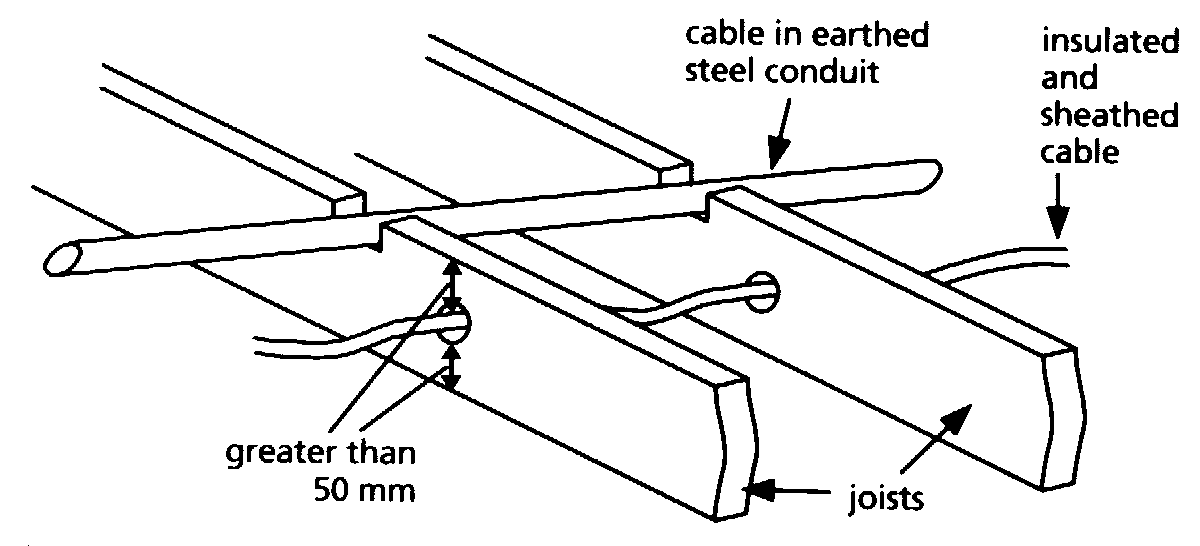The route the cable is going to take, in conduit, trunking, walls, touching thermal insulation, clipped to walls, etc., (The same size cable clipped to a normal wall or chased in a normal wall will carry more load than the same size and type of cable installed in trunking, conduit or touching thermal insulation).
Will the cable be grouped with or touching other cables. (This will down grade the current capacity of the cable slightly).
The length of cable to be used, total length of the circuit from the fuse board to the appliance. (The longer the cable, the more voltage that is lost in the cable due to the resistance of the cable. Only a maximum volt drop of 4% is permitted by the regulations).
The environment the cable is surrounded by, in sunlight, high ambient temperatures, exposed to the elements, extreme cold, fauna etc. (Installation of the wrong type of cable in an environment will mean frequent maintenance)
The size of fuse protection. (If the fuse is too great and there is a fault, you risk the possibility of starting a fire).
In order to comply with the regulations, any buried cables, be it in walls, under the floor, or in ceilings, must be at the correct depth and run in specific areas. Care must also be taken not to place them in areas where they will be susceptible to external influences such as heat sources or mechanical damage. If the cable is installed in trunking or conduit, on the surface, there are no prescribed areas providing it looks neat.
When installing cables carrying different voltages such as LV and ELV it is important that they are segregated so that LV circuits do not induce a current in the ELV circuit.
Care should be taken not to crowd trunking with multiple cables. As a guide, trunking should be filled to a maximum of 45% of its capacity.
Cables in Walls

Cables through joists

Notes:
1 Maximum diameter of hole should be 0.25 x joist depth
2 Holes on centre line in a zone between 0.25 and 0.4 x span
3 Maximum depth of notch should be 0.125 x joist depth.
4 Notches on top in a zone between 0.1 and 0.25 x span.
5 Holes in the same joist should be at least 3 diameters apart.
